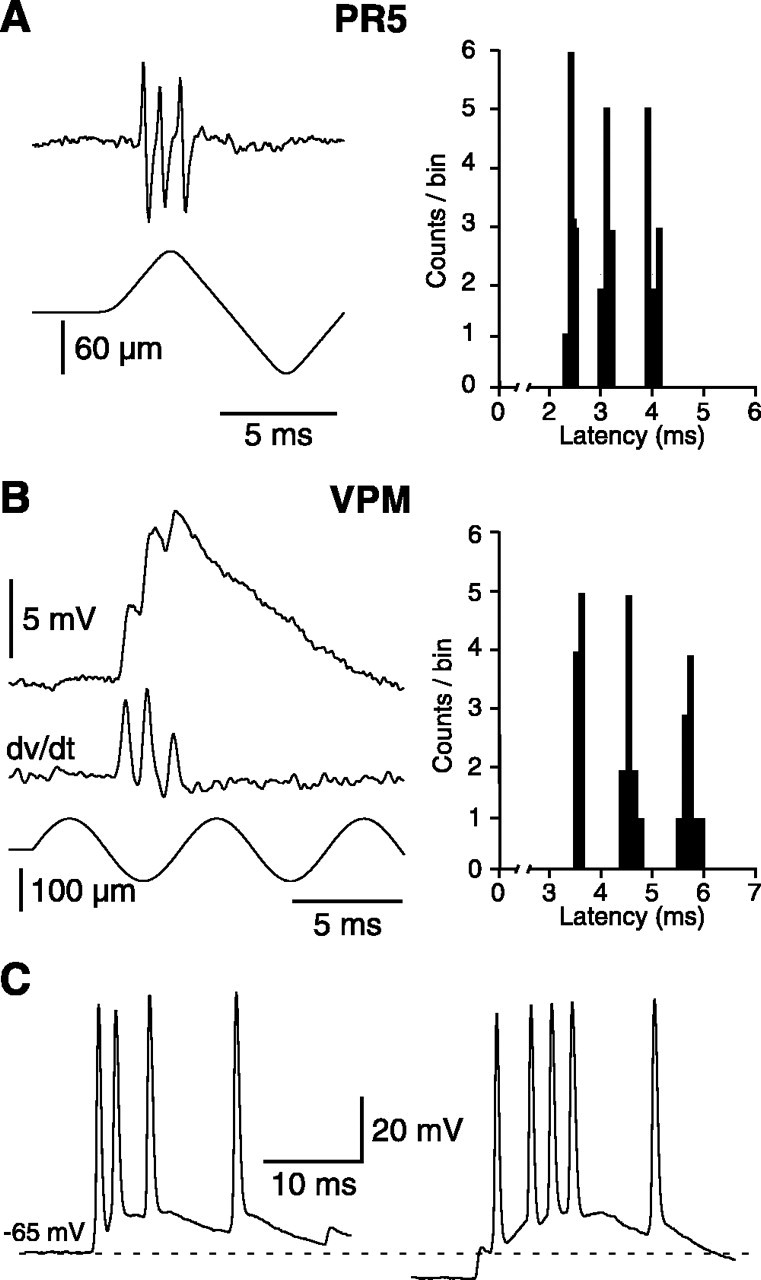Figure 10.

High firing rates induced in PR5 and barreloid cells by whisker deflections. A, Most PR5 units could generate stereotyped bursts of action potentials (intraburst frequencies, >1 kHz) in response to high-velocity whisker displacements. B, In barreloid cells, PR5 bursts induced compound EPSPs with similar intraburst frequencies. A, B, PSTHs show spikes (A) and EPSP counts (B) (discriminated by the time derivative of EPSPs) evoked by the first deflections of 10 stimulus sequences. C, The left-hand trace shows a burst driven by lemniscal EPSPs in response to the first cycle of a 100 Hz stimulus sequence. The right-hand trace shows the response to the same stimulus during membrane hyperpolarization. The dotted line indicates the resting potential (-65 mV).
